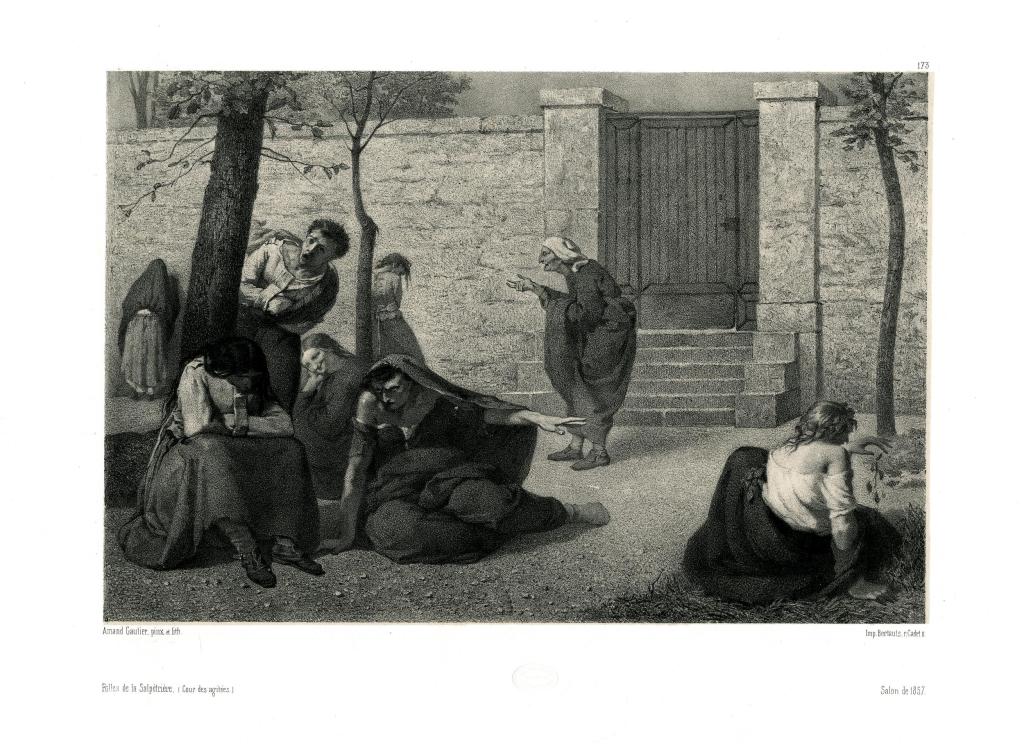
In the Journals – Confinement and Mental Health



“An armored military assault vehicle was donated to the department by the US military, fueling discussions about whether there should be (or is) a separation of US police and US military.”
The U.S. isn’t the only country experiencing a stark growth in prison populations. While true that the US has the highest proportion of its citizens behind bars, Brazil and China are among other countries recording higher prison population numbers. In honor of the 40th anniversary of Foucault’s Discipline and Punish: The Birth of the Prison (1975) the Weatherhead Initiative on Global History will be hosting a global conference for social sciences and humanities researchers to discuss the rising role of the prison in the modern age.
A supposedly “shifting” image of the typical heroin user in the 21st century strikingly resembles the rich, white, socialite users of 1880s Boston. A feature by Adam Rathge appeared in Points Blog; chronicling the shift of opiate usage by race and social class during this time frame. Special attention is paid to the impact of state legislation and local law enforcement initiatives prior to the passing of official federal mandates. In other opiate-related news, the question as to whether heroin use should be pursued as a crime versus an illness is being debated in states such as Rhode Island. With this past January seeing a more than doubled rate of lethal heroin overdoses, the state is pushing to equip officers with Narcan to better prevent heroin-related deaths. Read the interview with the state’s Director of Health, Dr. Michael Fine, for details.
$6.2 billion (to most of us) is quite a large sum of money. This is precisely the amount allocated to US police departments by the 41 million speeding tickets issued in any given year. What would happen to law enforcement budgets if cars were (almost magically) able to “drive themselves”? Google’s driverless cars are raising precisely this question among law enforcement officials and civilians alike.
Have you suddenly started noticing people talking a lot about Netflix’s newest series, Orange is the New Black? Even without being caught up, you can still enjoy a roundtable discussion inspired by the show that was hosted by the folks at Public Books.
Is live monitoring of surveillance cameras the way to ensure “effective panopticism”? Syracuse Chief of Police Frank Fowler seems to think so. Earlier in May, Fowler proposed that officers should evolve from their current, reactive use of cameras to respond to crimes that have already committed. Fowler argues that live monitoring of surveillance feeds by officers will convert cameras into a proactive policing tool.
If you’re planning a summer vacation that requires a considerable amount of time in the car, plug into NPR News’ RSS feed we shared last month. A myriad of police-related podcasts are featured, and are sure to make the ride feel faster. In case you exhaust that list, we recommend Archipelago’s feature on policing in downtown Oakland. Listen to Bryan Finoki, Nick Sowers and Javier Arbona as they explore the hyper-policed areas of the former Occupy movement.
Originally published 35 years ago, Policing the Crisis regained the spotlight in our Book Reviews section in May. Merijn Oudenampsen discusses how the book’s message has evolved since its first publication and applies its take-aways to the current climate of Dutch politics.
Speaking of anniversaries, 2014 also marks 10 years since Jacque’s Derrida’s passing. Anthropoliteia circulated information about an upcoming gathering of Derridian legal scholars organized by Critical Legal Thinking. Speakers include Aggie Hirst and Cathering Kellogg.
In other news, Hamtramck, MI police inspired mixed emotions upon the debut of its newest “addition”. An armored military assault vehicle was donated to the department by the US military, fueling discussions about whether there should be (or is) a separation of US police and US military.
Macedonian police also made headlines in May, with ethnic rioting in Skopje provoking criticisms about excessive use of force. Thanks to Tweeter Chris Diming, who provided an additional post from the Independent Balkan News Agency.
Do anthropologists belong in police departments? Anthropoliteia’s newest regular feature –Practicum– debuted with a post from our new author Jennie Simpson. Tune in to read Jennie’s reflections and experiences about what its like to be a social scientist working for/with departments.